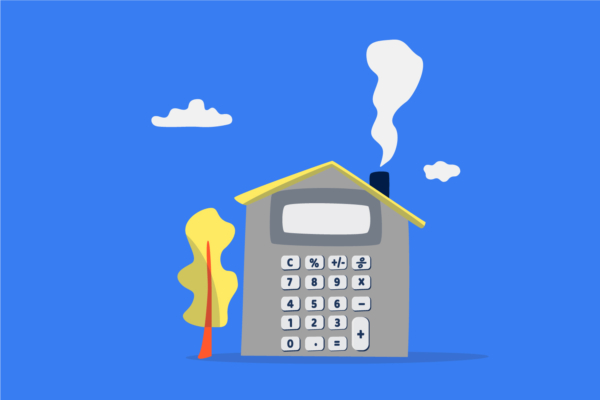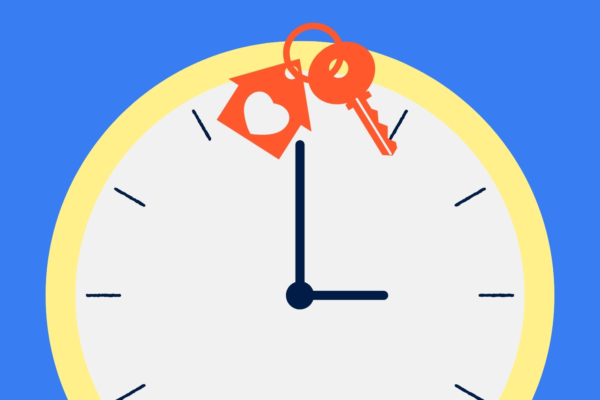
Guide to Homeownership: Creative Mortgage Refinancing

Mortgage refinancing can be an effective tool to manage your finances and make the most of your homeownership investment. While the most common reason to refinance a mortgage is to lower the interest rate, there are many other ways that refinancing can be used to your advantage.
From freeing up cash for home improvements to converting an adjustable-rate mortgage to a fixed-interest loan, there are various reasons why homeowners choose to replace their home loan. In this article, we will explore the different ways that mortgage refinancing can be used to achieve your financial goals and how it can help you save money in the long run.
What is a mortgage refinance?
A mortgage refinance is the process of replacing an existing home loan with a new one. Refinancing is not a modification or an attachment to an original mortgage— it is a brand-new loan that pays off your existing balance. Because it is a new loan, homeowners must apply for a refinance and go through the same steps as their original loan, including an appraisal and paying closing costs.
Most often, homeowners often refinance to get a better interest rate. There are a few ways this could happen, including market rates dropping or credit score improvements that have made better rates available. Doing this can be an effective way to lower total interest and monthly mortgage payments, saving homeowners thousands in the long run.
You have options
Every real estate market is unique – this is especially true of Texas with its restrictions on home equity and mortgages. Take advantage of our local knowledge to get your refinance done well.
6 Reasons for Mortgage Refinancing
While a new loan can save you money with a lower rate, it’s not the only reason to opt for a new loan. A refinance can be used to shorten your term length, tap into your home’s equity, and more. With all of these scenarios, it’s important to keep this in mind: Refinancing comes with its own set of costs, so borrowers should evaluate whether the potential savings from refinancing outweighs the costs of refinancing.
1. Get cash for a home improvement project
Through a cash-out refinance, a homeowner can take out a new loan that is larger than what they owe on their current mortgage and receive the difference in cash. This cash can then be used for anything, including making home improvements or renovations. Using a cash-out refinance can be a smart idea, as mortgages can offer lower interest rates than personal loans.
2. Eliminate private mortgage insurance (PMI)
Refinancing can be used as a strategy to get rid of private mortgage insurance (PMI) for homeowners who have built up equity in their homes.
PMI is a type of insurance that is required by lenders when a borrower puts less than 20% down on a home purchase. By refinancing, a homeowner can take advantage of a higher appraised value of their home due to increased property values or renovations. If the appraised value of the home is high enough, the homeowner may be able to refinance their mortgage to a new loan amount that is less than 80% of the home’s current value. This means that the homeowner will no longer be required to pay PMI since the loan-to-value ratio would now be below 80%.
Additionally, refinancing may also result in a longer loan term or a higher interest rate, which could offset any savings from eliminating PMI. Refinancing to avoid PMI works best if you’re also achieving a better interest rate.
3. Convert an ARM into a fixed-rate mortgage
When you refinance your loan, your new mortgage can be any type—it doesn’t have to be the same as your original. This gives homeowners the chance to switch their loan from an adjustable-rate mortgage to a fixed-rate.
There are two big benefits to doing this:
- Stability and predictability: The main advantage of a fixed-rate mortgage is that it offers stability and predictability in terms of monthly payments. With a fixed-rate mortgage, the interest rate remains the same for the entire term of the loan, which makes it easier for homeowners to budget and plan for their mortgage payments.
- Protection against rising interest rates: With an ARM, the interest rate can fluctuate over time, which means that homeowners may end up paying more in interest if rates increase. By refinancing to a fixed-rate mortgage, homeowners can protect themselves against future interest rate hikes.
If your introductory ARM rate is about to change or you’re worried about the future of interest rates, refinancing with a different type of loan can be a smart move that gives you peace of mind.
4. Consolidate debt into a lower-interest loan
Earlier we discussed how a cash-out refinance can be used to tap into your home’s equity to make home renovations. Using your cash from a cash-out refinance to consolidate debt is another purpose worth mentioning.
Credit card debt and other unsecured loans often carry high interest rates, which can make it difficult for homeowners to pay down their debt. By consolidating their debt into a lower-interest mortgage loan, homeowners can reduce their overall interest expenses and potentially save money over time. Plus, by rolling your debt into one loan, homeowners can simplify their monthly debt payments and reduce the chances of missing a payment.
5. Reduce the term of your mortgage
Financial situations change over time. If you’re in a better position to put more money towards your monthly payment each month, you may want to consider refinancing into a shorter-term loan. By choosing a shorter term, homeowners can reduce the amount of time it takes to pay off their mortgage, thus paying less interest over the life of the loan.
While your monthly payments will likely increase, you pay off your mortgage sooner and potentially save thousands of dollars in interest.
6. Switch from an FHA loan to a conventional mortgage
Refinancing from an FHA loan to a conventional loan can also be advantageous for homeowners.
FHA loans require borrowers to pay mortgage insurance premiums (MIP) both upfront and annually, regardless of the amount of down payment they make or the amount of equity gained in a home. Conventional loans, on the other hand, only require private mortgage insurance (PMI) only if the borrower’s equity is below 20%.
Because PMI isn’t required for the entire life of the loan, FHA borrowers can save by refinancing into a conventional loan.
First Steps to Refinancing
When considering mortgage refinance, the first step is to find a local lender and speak with a mortgage loan originator (MLO). While refinancing can potentially save you thousands, it can also end up costing you for a number of reasons. Mortgage professionals will be able to assess your situation and help you determine whether a refinance is a smart move.
MLOs can provide detailed info about the loan options available (not just refinances), helping homeowners make an informed decision.
Think About the Possibilities
Mortgage refinancing is a powerful financial tool that can help homeowners achieve a range of goals beyond just reducing interest rates. From tapping into home equity to funding home improvement projects or consolidating debt to taking advantage of a different type of loan, refinancing offers a flexible solution to manage your mortgage and your finances. By exploring your options and working with a trusted lender, you can find the best refinancing strategy that meets your unique needs and helps you save money in the long run.
Looking for a refinance?
Contact our team to learn how refinancing your mortgage can add more flexibility to your finances.


